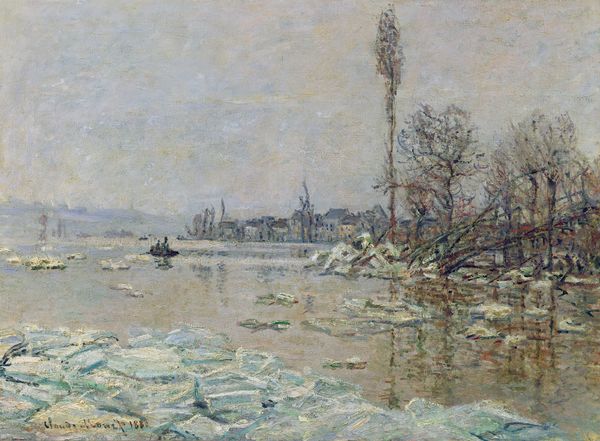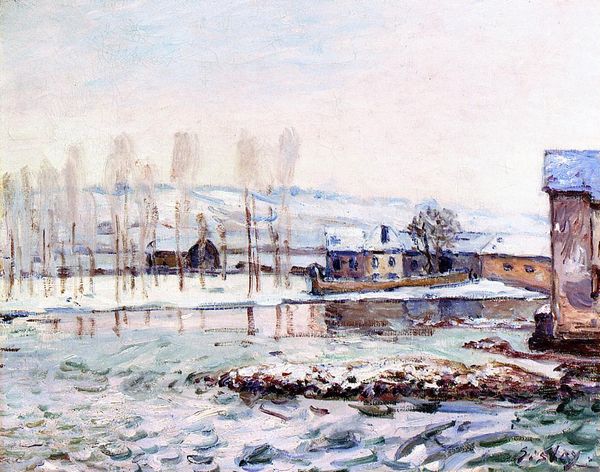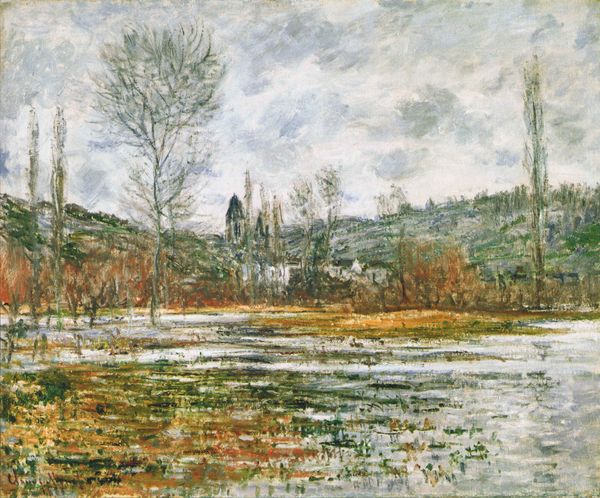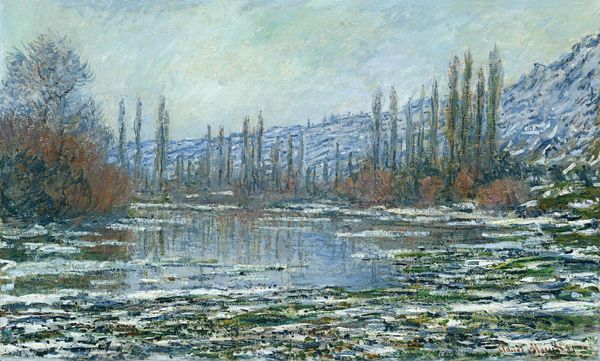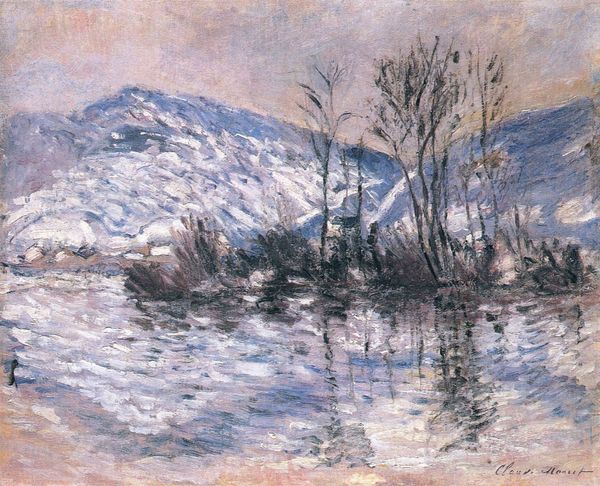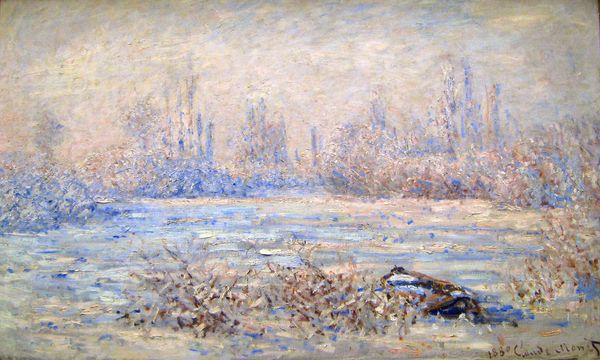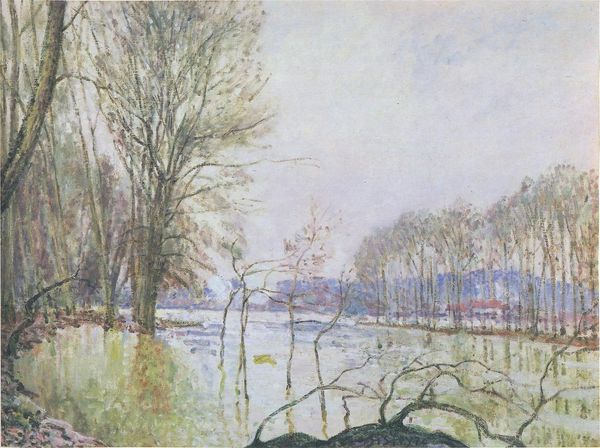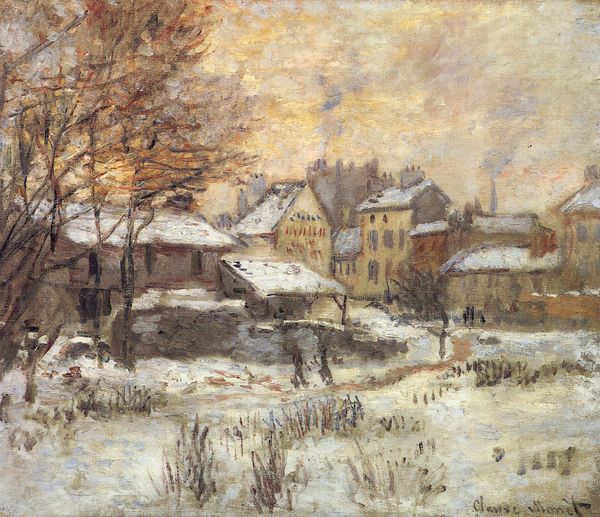
painting, plein-air, oil-paint
#
tree
#
sky
#
16_19th-century
#
painting
#
impressionism
#
impressionist painting style
#
plein-air
#
oil-paint
#
landscape
#
impressionist landscape
#
oil painting
#
watercolor
Copyright: Public domain
Curator: We're standing before Claude Monet's "Breakup of Ice, Lavacourt, Grey Weather," painted in 1880. Look at how he's captured the Seine in its thaw. Editor: Brrr, I feel a chill just looking at it! There's something so bleak, yet compelling, about the greys and whites. The composition makes you feel utterly stranded. Curator: Absolutely, it's about more than just scenery; it reflects the upheaval Monet was experiencing. He’d recently moved to Vétheuil after the death of Camille, his wife. So grief hangs over this period in a way. He used the scene as his studio, you know, painting directly from nature. Think of lugging the oil paints, easels through all that. Editor: Precisely! And the very materiality contributes to the atmosphere. Consider the dense application of paint, mimicking the fragmented ice floes. There's something laborious, almost brutal, about the repetitive strokes – a fitting parallel to the arduous conditions and the artist’s emotional state. The brushstrokes become the record of work. The very opposite, ironically, of his reputation of a light 'sketcher' of impressions. Curator: I feel that resistance of easy seeing so profoundly. He wasn’t merely recording; he was wrestling with transience. That momentary scene became monumental on canvas. Each grey becomes a shade of emotion; each sliver of ice a fleeting memory. The composition has an ephemeral quality, too – you expect it will melt away at any moment. Editor: And how that fleeting quality challenges established artistic values. Monet is using commercial, ready-made paints. The rise of industrialized pigment production enabled artists like him to experiment freely with color, outside academic constraint. That itself becomes part of this sense of ephemerality you talk about: art moves from permanent representation to a capture of experience that reflects broader changes of production in society. Curator: It is more like an immediate capturing. When you zoom into the details you will see how he worked from dark shadows to touches of whites. He built the volume just using different variations of these whites, such like a symphony. Editor: He really pushed his method! Even his materials point to a radical break with the academy in an interesting fashion. This certainly made me rethink what landscape painting could achieve beyond scenic views. Curator: For me, it’s a potent reminder that beauty and pain can coexist, immortalized in paint.
Comments
No comments
Be the first to comment and join the conversation on the ultimate creative platform.

